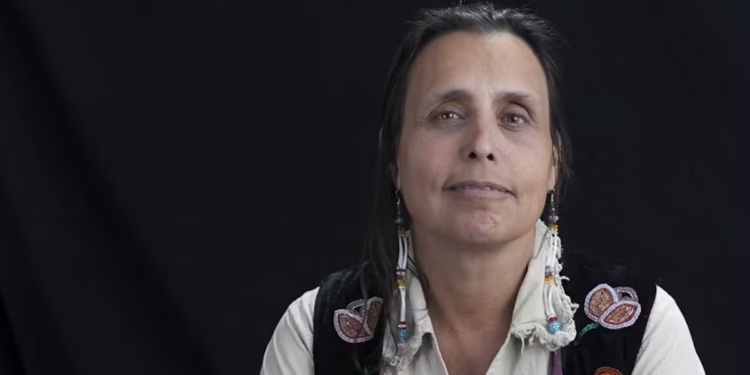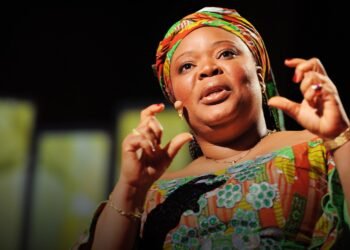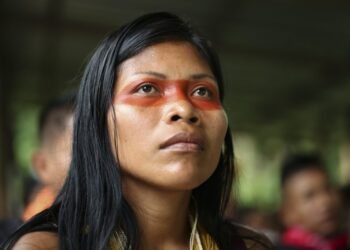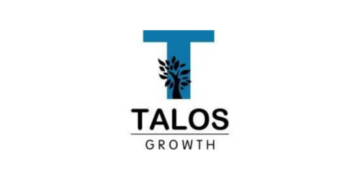What if one person could change how we think about land, people, and our future? Winona LaDuke has spent her life answering that question.
Born in Los Angeles in 1959, she grew up with a strong sense of justice. Her father was Ojibwe, and her mother was Jewish. This mix of cultures shaped her view of the world.
LaDuke co-founded Honor the Earth. She also leads the White Earth Land Recovery Project. Her work focuses on getting land back for Native communities.
She ran for vice president with the Green Party in 1996 and 2000. In 2016, she made history by getting an electoral vote. This was a first for the Green Party.
Her fight against pipelines and for sustainable development continues today. She believes in an economy that respects both people and the planet.
Key Takeaways
- Winona LaDuke is a leading voice for environmental and Native rights.
- She has worked on land recovery and sustainable development for years.
- LaDuke ran for vice president twice as part of the Green Party.
- She focuses on issues like pipeline protests and hemp farming.
- Her work highlights the link between human rights and the environment.
- She has received awards for her dedication to community and justice.
- LaDuke’s efforts show how one person can impact many lives.
Early Life and Formative Years
A person’s roots often shape their future path in unexpected ways. The early experiences of this remarkable activist reveal how childhood influences can blossom into lifelong dedication.
Family Background and Cultural Roots
Her family heritage blended two distinct cultural traditions. Her father Vincent LaDuke, also known as Sun Bear, was an Ojibwe actor and activist from White Earth Reservation. Her mother Betty Bernstein was an artist and activist of Russian Jewish descent.
After her parents divorced when she was five, she split her childhood between Los Angeles and Ashland, Oregon. Frequent visits to White Earth Reservation helped her connect with her Native heritage during these formative years.
Both parents were activists who valued social justice. Their commitment to human rights and cultural preservation deeply influenced her values and future work.
Education and Early Activism
She attended Harvard University, graduating in 1982 with a degree in economics focused on rural economic development. During her time at Harvard, she became involved in Native activism.
She worked on uranium mining issues affecting Navajo land and testified at the United Nations about exploitation of Indian lands. These experiences marked her first steps into advocacy.
After graduation, she moved to White Earth Reservation where she worked as a high school principal. Initially, she faced challenges due to not knowing the Ojibwe language or many community members.
While working at the reservation, she earned a master’s degree in community economic development from Antioch University. Her studies focused on the reservation’s subsistence economy and sustainable development.
These early experiences shaped her commitment to Native rights and environmental issues. They set the foundation for her future leadership in organizations like the Indigenous Women’s Network.
Her initial struggles at White Earth motivated deeper involvement in local issues. This period of her life established the core principles that would guide her career in land recovery and community work.
Environmental and Native Rights Activism
Building sustainable futures requires reclaiming what was lost while innovating for what’s ahead. This activist’s work demonstrates how focused efforts can restore balance between people and planet.
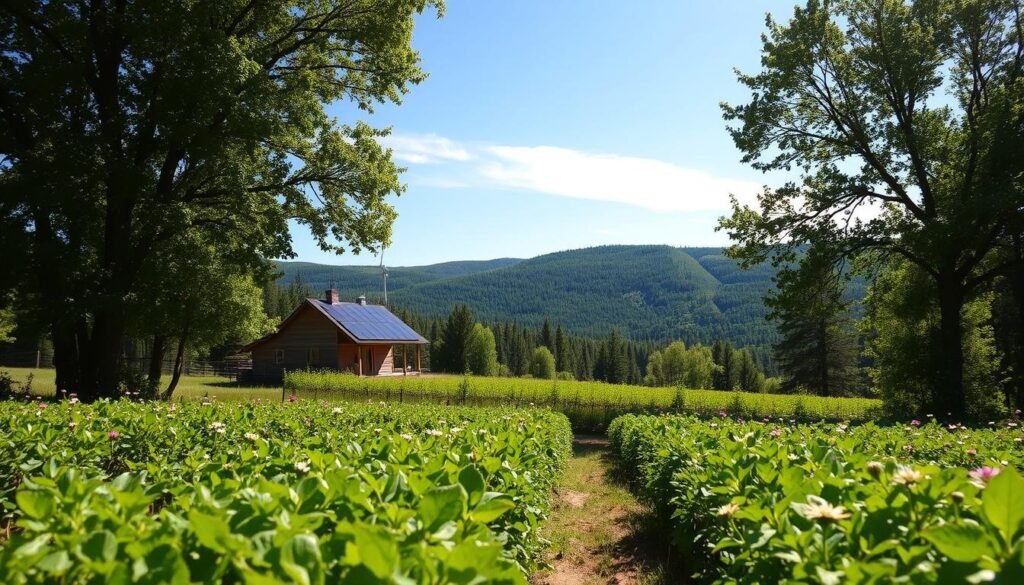
White Earth Land Recovery Project (WELRP)
In 1989, a visionary initiative began using Reebok Human Rights Award funds. The White Earth Land Recovery Project started buying back reservation land lost to non-Native ownership.
This organization focused on returning territory to tribal use and control. It represented a powerful step toward cultural and economic sovereignty.
WELRP developed multiple sustainable enterprises across recovered lands. Wild rice cultivation became a cornerstone of their food systems work.
The project also established buffalo herds and wind energy projects. These initiatives honored traditional practices while embracing modern solutions.
Through their Native Harvest program, they market traditional products. This supports local economy while preserving cultural foodways.
By the year 2000, the project had acquired over 1,200 acres. This land recovery created new opportunities for sustainable development.
The work extends beyond physical land reclamation. WELRP also supports Ojibwe language programs and community education.
Honor the Earth and National Advocacy
In 1993, a new organization emerged to amplify Native environmental voices. Honor the Earth was co-founded with musical artists the Indigo Girls.
This innovative group used music and arts to raise awareness. They focused on generating support for critical environmental issues.
The organization provided financial and political resources to Native communities. It empowered Indigenous voices in national environmental debates.
Honor the Earth worked on climate change, renewable energy, and environmental justice. Their efforts reached both national and international audiences.
They became involved in high-profile protests like the Dakota Access Pipeline opposition. This brought attention to threats facing Native lands and waters.
The organization granted millions to support sustainable communities. It helped develop financial resources for environmental protection.
In 2023, the founder resigned after a court ordered payment in a harassment case. This followed acknowledgment of failure to protect victims within the organization.
Throughout her career, this activist fought environmental threats like uranium mining. She consistently promoted Indigenous wisdom and public awareness.
Her advocacy connects land rights with cultural preservation and climate action. This holistic approach has created lasting impact on both tribal and national levels.
Political Career and Vice-Presidential Campaigns
Sometimes political campaigns become platforms for change beyond winning elections. Winona LaDuke’s national political work brought critical issues to the forefront.
She joined Ralph Nader on the Green Party ticket in 1996 and 2000. Their platform centered on environmental protection and Native rights.
The campaigns earned 0.71% and 2.74% of the vote respectively. Though not victorious, they amplified important messages nationwide.
In 2016, she made political history through an unexpected event. A faithless elector in Washington state cast a vice-presidential vote for her.
This marked the first electoral vote for any Green Party member. It also made her the first Native American woman to receive one.
Her political engagement extended beyond third-party campaigns. She endorsed Democratic presidential tickets in 2004, 2008, and 2012.
During the 2016 Dakota Access Pipeline protests, she joined resistance camps. She spoke powerfully about water protection and Indigenous rights.
Her activism included opposing other pipeline projects like Sandpiper and Line 3. She consistently connected climate action with water rights.
That same year, she ran for chair of the White Earth tribal council. Though unsuccessful, it showed her commitment to local leadership.
Her political efforts always served her broader goals. She used elections to promote environmental justice and tribal sovereignty.
This approach balanced grassroots activism with national campaigning. It brought Native issues and sustainable policies to wider audiences.
The 2016 electoral vote remains a significant milestone. It represents growing recognition for both Green Party and Native American voices in United States politics.
Through political channels, she amplified the work of her community organization. She demonstrated how elections can serve activism beyond partisan politics.
Winona LaDuke’s Sustainable Initiatives and Hemp Advocacy
True change often grows from the ground up, literally. While political platforms amplify messages, hands-on projects create tangible alternatives to unsustainable systems.
Winona’s Hemp & Heritage Farm
Since 2018, a remarkable 40-acre demonstration farm has operated on White Earth Reservation. This initiative grows industrial hemp varieties from around the world alongside traditional vegetables and tobacco.
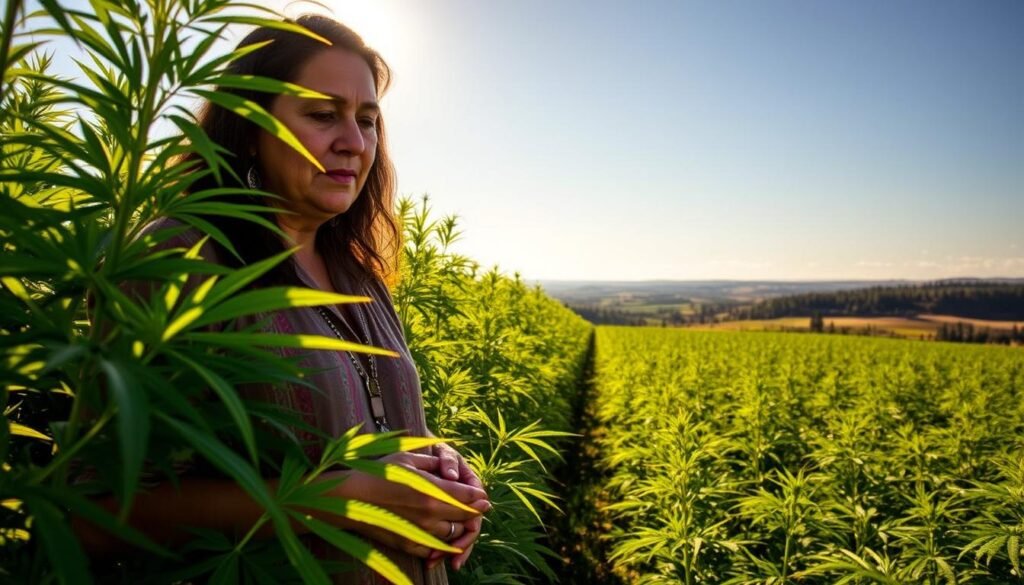
The farm promotes hemp as an environmental solution. This crop uses significantly less water than cotton while absorbing carbon from the atmosphere.
It also replaces petroleum-based products with renewable alternatives. This approach supports a greener economy while honoring traditional practices.
The Heritage Farm operates as a nonprofit organization. Its mission centers on creating Indigenous women-led economic systems based on local resources.
This model emphasizes kindness to Earth through sustainable food, energy, and fiber production. It represents a practical alternative to extractive industries.
Recent Environmental Battles: Line 3 and Beyond
Pipeline protests have remained a consistent focus of her activism. The Enbridge Line 3 project in Minnesota became a particularly significant battle.
She criticized the Biden administration for permitting this pipeline despite canceling Keystone XL. Many viewed this as a betrayal of both Native communities and climate promises.
The project threatened watersheds and treaty lands across the region. Her leadership in resistance efforts drew national attention to these issues.
This work continues her long history of pipeline opposition. She previously participated in Dakota Access and Sandpiper pipeline protests.
Her role as a water protector has taken her to speaking engagements nationwide. These include addresses at events like the National Audubon Convention.
Through both farming and activism, she demonstrates how traditional knowledge and modern sustainability can combine. This integrated approach fights what she calls “stupid ideas” that threaten both land and people.
These efforts turn the economy away from fossil fuels toward renewable resources. They represent the latest chapter in a lifetime of dedicated environmental work.
Publications and Cultural Contributions
Beyond activism and farming, creative expression serves as another powerful tool for change. This multifaceted leader has used writing and publishing to amplify Indigenous voices and preserve cultural heritage.
Notable Books and Essays
Her literary work spans both fiction and non-fiction genres. The novel “Last Standing Woman” debuted in 1997, with a special 25th anniversary edition released later.
Non-fiction works include “All Our Relations: Native Struggles for Land and Life” from 1999. This important book was reprinted in 2016, reaching new audiences.
Other significant publications include “Recovering the Sacred” (2005) and “To Be a Water Protector” (2020). These works explore the deep connections between environmental justice and cultural preservation.
She has co-authored books on critical issues affecting Native communities. These include works on sexual violence and feminist activism.
Her editorials and essays appear in national and international media. They contribute to vital discussions about Native rights and climate change.
Spotted Horse Press and Cultural Preservation
She founded Spotted Horse Press to publish Indigenous stories and perspectives. This publishing company produces her own writings while promoting other Native voices.
The press also released her travel journal and works focused on cultural preservation. This effort helps maintain Anishinaabe traditions for future generations.
Another venture includes Spotted Horse Coffees, a tribally owned coffee company. They offer fair trade organic blends with proceeds supporting peace initiatives.
Her cultural contributions extend to documentary films and public speaking. She has appeared in productions that chronicle environmental battles and Indigenous wisdom.
These creative endeavors align with her broader mission of education and inspiration. Through storytelling, she connects environmental issues with social justice themes.
Themes of resistance and resilience run through all her published works. They reflect a lifetime commitment to both people and the planet.
Conclusion
A leader’s legacy is measured not just by words, but by lasting impact on land and lives. Winona LaDuke embodies this through decades of advocacy for Native rights and environmental justice.
Her work spans from co-founding Honor the Earth to promoting sustainable development via hemp farming and land recovery. Honors like the Reebok Human Rights Award highlight her dedication.
Despite challenges, she remains a resilient voice for climate action and cultural preservation. Her efforts inspire broader movements toward ecological health and Indigenous self-determination.
Engage with her projects and writings to support a more just and sustainable world.
FAQ
What is the White Earth Land Recovery Project?
The White Earth Land Recovery Project is an organization she founded dedicated to recovering and preserving the original land base of the White Earth Ojibwe. It focuses on sustainable development, protecting indigenous seeds, and revitalizing traditional food systems.
With whom did she run for Vice President of the United States?
She ran as the Green Party’s vice-presidential candidate alongside Ralph Nader in both the 1996 and 2000 elections, bringing national attention to issues of environmental justice and Native American rights.
What is the focus of her sustainable farming initiative?
Her Winona’s Hemp & Heritage Farm promotes industrial hemp as a sustainable crop for fiber and food. This initiative supports a local, regenerative economy and provides an alternative to environmentally destructive industries.
What recent pipeline project has she actively opposed?
She has been a leading voice in the fight against the Line 3 pipeline replacement project in Minnesota, citing threats to clean water, wild rice beds, and treaty rights of the Anishinaabe people.
How does her work address climate change?
Her activism directly confronts the climate crisis by opposing fossil fuel infrastructure, promoting sustainable local food and energy systems, and advocating for a just transition to a clean energy economy.

